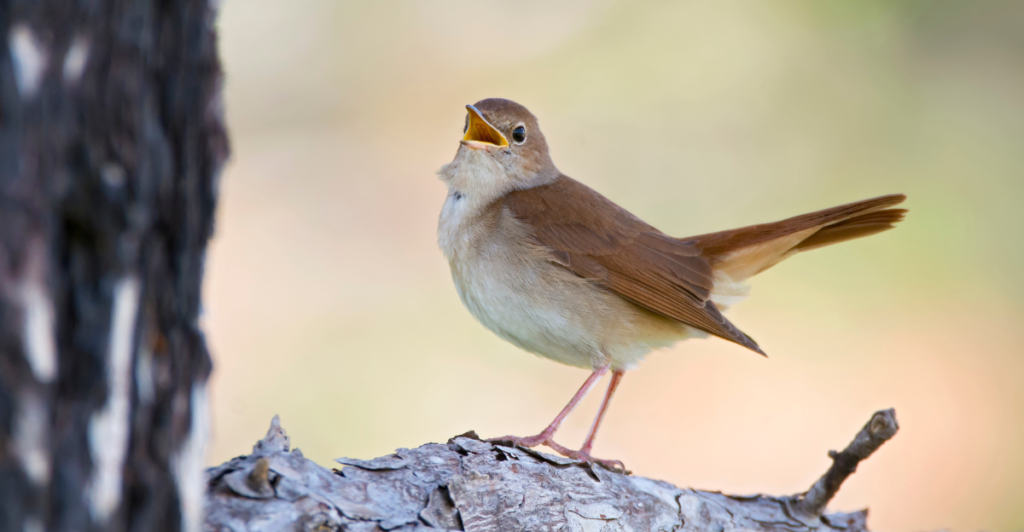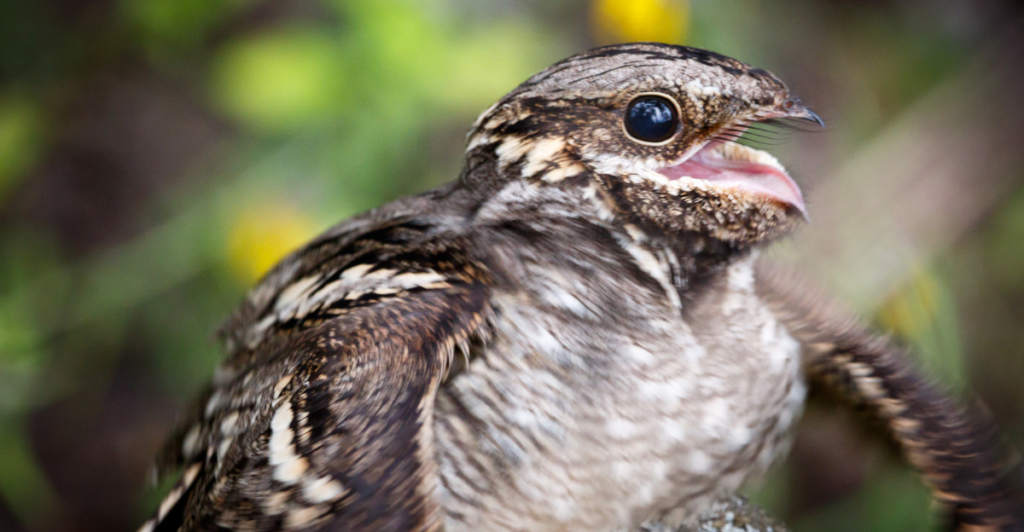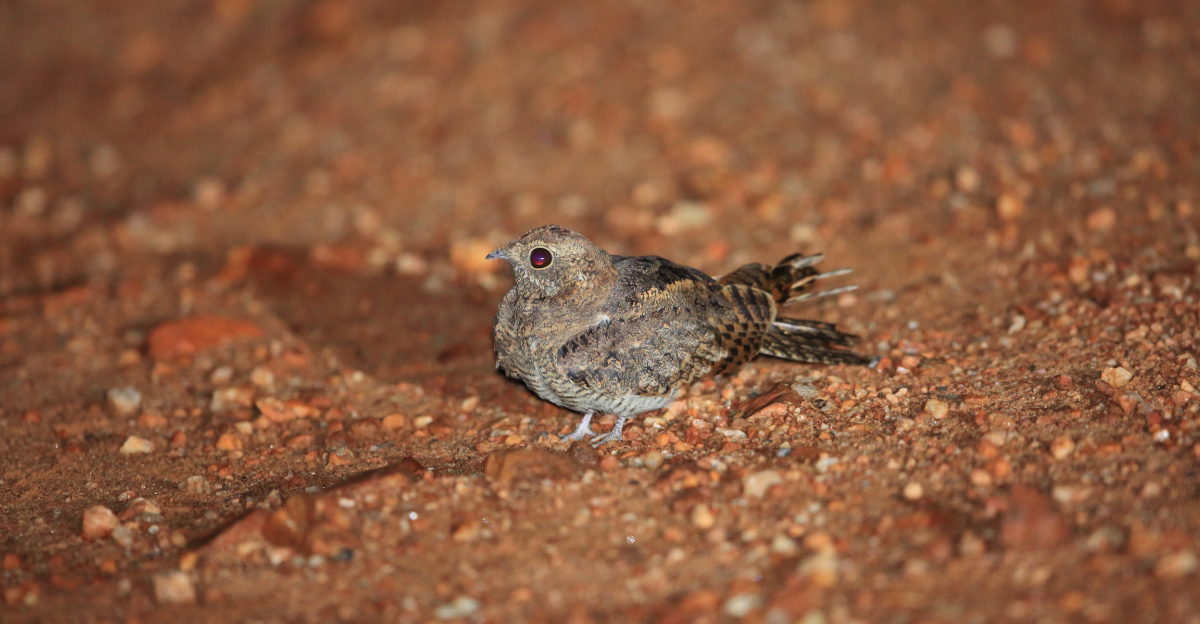
As night falls and the world quiets down, a different kind of music fills the air, one composed by birds that sing under the cover of darkness. Whether it’s the melodic nightingale, the mimicking mockingbird, or the eerie calls of an owl, these nocturnal vocalists use their songs to communicate, attract mates, and mark their territory.
1. Common Nightingale

Famous for its complex melodies, the common nightingale is capable of producing over 1000 different musical phrases. Male nightingales usually sing at night during the breeding season to attract mates. Their songs are loud and powerful, often standing out prominently in their habitats.
2. Northern Mockingbird

The Northern mockingbird is a talented mimic known for its elaborate and varied repertoire, often incorporating sounds from other birds, insects, and even mechanical noises. Northern mockingbirds sing persistently at night, especially during the breeding season, using their songs to attract mates and defend their territory. They are commonly found in urban and suburban areas across North America.
3. Eastern Whip-poor-will

Named after its distinctive “whip-poor-will” call, this nocturnal bird sings tirelessly at night, sometimes repeating its cry hundreds of times in succession. Found in forests across eastern North America, the Eastern whip-poor-will’s song is most prominent after dusk and before dawn during the breeding season.
4. Tawny Owl

Known for its haunting “twit-twoo” calls, the tawny owl sings at night to mark its territory and to communicate with mates. Male and female tawny owls often engage in duets, creating an eerie yet beautiful nighttime atmosphere. This species is common across Europe and is a symbol of nocturnal mystery.
5. American Robin

Although typically a daytime singer, the American robin is also known to vocalize at night, especially in urban areas where artificial light influences their behavior. Their songs are particularly common when males compete for mates during the breeding season.
6. European Robin

The European robin sings at dawn and dusk but can also be heard at night during certain times of the year. Their sweet and clear song is often associated with territorial defense or mate attraction, particularly during late autumn and winter.
7. European Nightjar

This nocturnal bird produces a distinctive “churring” sound that can last several minutes without interruption. Active at dusk and throughout the night, male nightjars use their song to attract mates while hunting insects under moonlit skies.
8. Barred Owl

Famous for its “who-cooks-for-you” call, the barred owl’s repertoire includes hoots, cackles, and gurgles. These sounds are most commonly heard during mating season when pairs engage in lively duets in the darkness.
9. Black-Crowned Night-Heron

This heron species is active at night and emits raspy croaking calls that resonate through wetlands and marshes. Their nocturnal vocalizations add an atmospheric touch to their habitats worldwide. Often seen perched silently along the water’s edge, they suddenly spring into action, using their keen eyesight to hunt fish, amphibians, and small mammals under the cover of darkness.
10. Yellow-Breasted Chat

Known for its loud whistles, cackles, and clucks, this bird often sings at night during the breeding season. The yellow-breasted chat’s complex vocalizations are part of its courtship display and territorial defense.
11. Song Thrush

While the Song Thrush is primarily known as a daytime singer, it occasionally breaks the silence of the night with its melodious voice. Recognized for its clear, flute-like song and repetitive phrases, this bird is particularly vocal during the breeding season when males use their songs to defend territory and attract mates.
12. Hermit Thrush

The Hermit Thrush is known for its ethereal, flute-like song that carries a haunting beauty through quiet forests. Though typically a daytime singer, this shy and solitary bird occasionally vocalizes after dark, especially during the breeding season.
Discover more of our trending stories and follow us to keep them appearing in your feed

Climate Change Overestimated? New Data Shows Oceans Are Cooling The Planet Faster Than Predicted
Lake Shasta’s Remarkable Comeback From Drought Captured in Stunning Images
There Will Be Eruptions”: Concerns Mount as Yellowstone Supervolcano Activity Shifts
California Is Breaking Apart: A Fault Line Is Forming Faster Than Anyone Predicted
This article first appeared here
Stay connected with us for more stories like this! Follow us to get the latest updates or hit the Follow button at the top of this article, and let us know what you think by leaving your feedback below. We’d love to hear from you!







